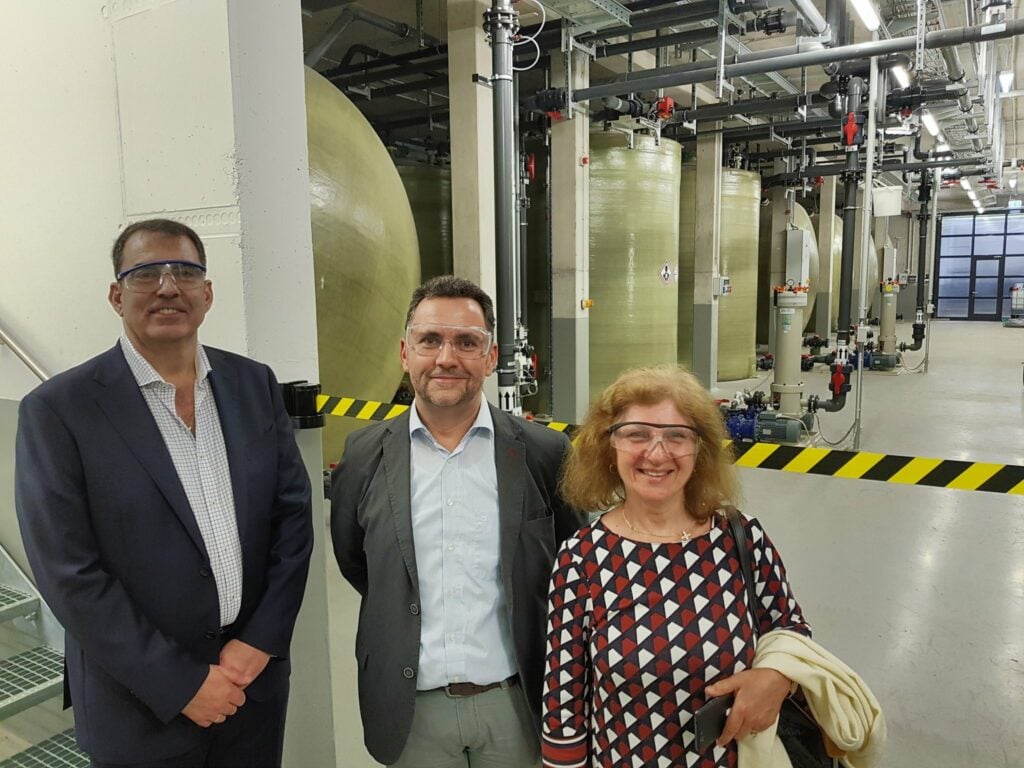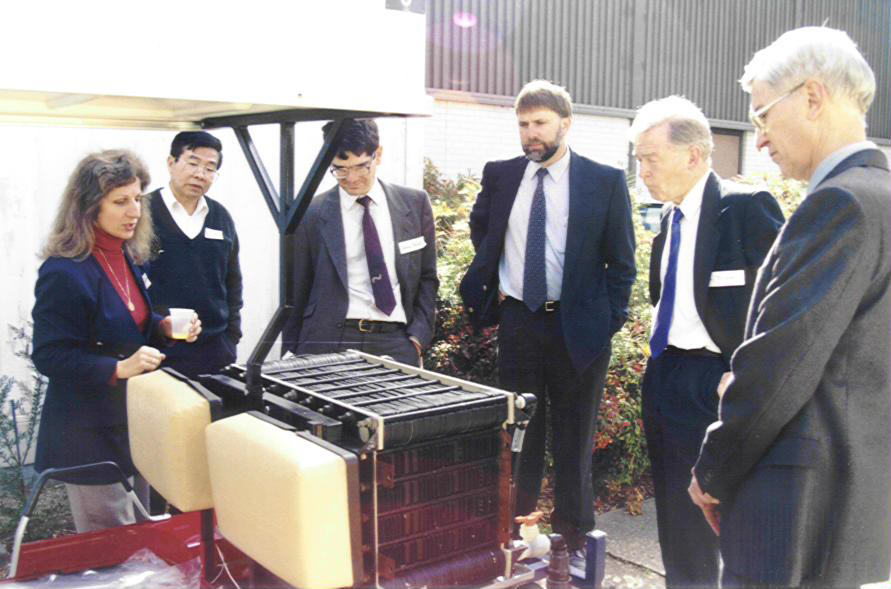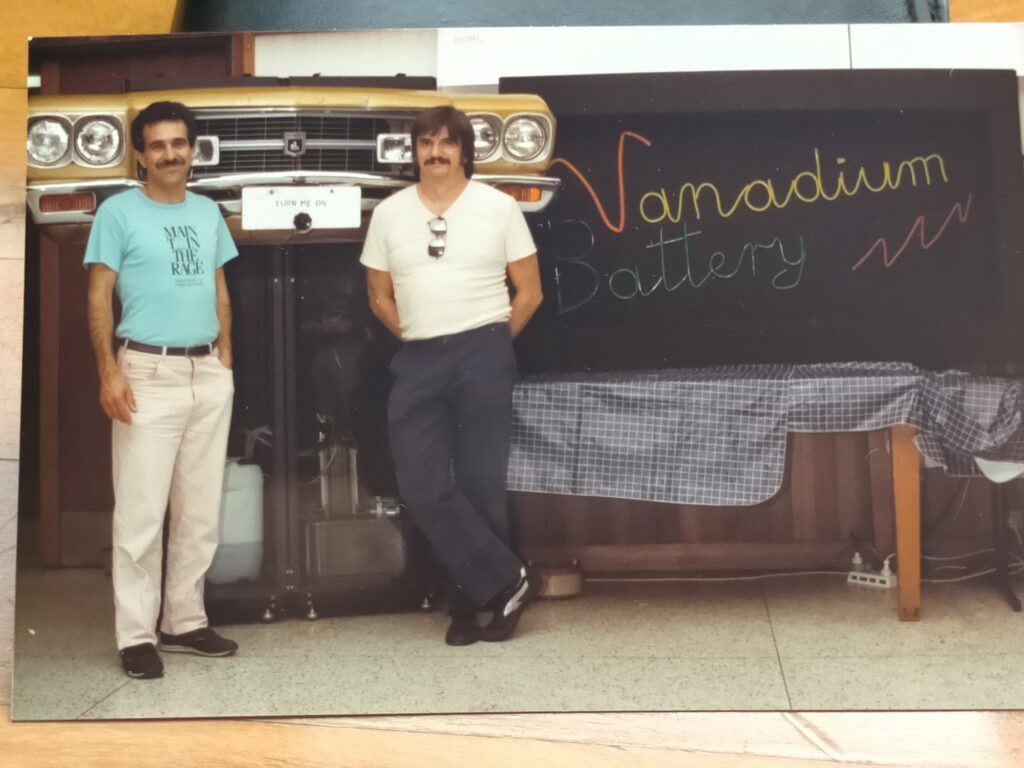
Andy Colthorpe speaks to Maria Skyllas-Kazacos, one of the original inventors of the vanadium redox flow battery, about the origins of the technology and its progression.
This is an extract of an article which appeared in Vol.28 of PV Tech Power, Solar Media’s quarterly technical journal for the downstream solar industry. Every edition includes ‘Storage & Smart Power,’ a dedicated section contributed by the team at Energy-Storage.news.
Enjoy 12 months of exclusive analysis
- Regular insight and analysis of the industry’s biggest developments
- In-depth interviews with the industry’s leading figures
- Annual digital subscription to the PV Tech Power journal
- Discounts on Solar Media’s portfolio of events, in-person and virtual
In Volumes 21 and 23 of PV Tech Power, we brought you two exclusive, in-depth articles on ‘Understanding vanadium flow batteries’ and ‘Redox flow batteries for renewable energy storage’.
The team at CENELEST, a joint research venture between the Fraunhofer Institute for Chemical Technology and the University of New South Wales, looked at everything from the principles behind how flow batteries work, to their applications and potential.
One of the authors, Maria Skyllas-Kazacos AM, is an emeritus professor at the UNSW Sydney Australia. Recognised as one of the original inventors of the vanadium redox flow battery (VRFB) and holder of more than 30 patents relating to the technology. We spoke to her about how some of those original discoveries came about — and why it’s been a long road for VRFBs from lab to mainstream deployment ever since.
The first vanadium flow battery patent was filed in 1986 from the UNSW and the first large-scale implementation of the technology was by Mitsubishi Electric Industries and Kashima-Kita Electric Power Corporation in 1995, with a 200kW / 800kWh system installed to perform load-levelling at a power station in Japan. So what has taken so long?
It took a long time for our work to even be noticed. But we were lucky that very early on, even though the scientific community hadn’t really picked up on it, industrial groups like Sumitomo and Mitsubishi Chemicals did. We also had a couple of people here in Australia and in Thailand who picked it up fairly early, because they were working on flow batteries and they had an interest in vanadium.
One of Mitsubishi Chemicals’ subsidiaries, Kashima-Kita, was using orimulsion made from Venezuelan pitch in their power stations, which was very rich in vanadium. So they had this huge amount of waste product that they were extracting from this soot from the power station, and they were looking for ways to use it.
They had been working on iron-chromium batteries for a few years in Japan, under NEDO (the National New Energy and Industrial Technology Development Organisation). But when they saw the work that we did on vanadium, they became quite interested.
We licensed our technology to Mitsubishi Chemicals and Kashima-Kita Electric Power Corporation and in the mid-1990s, they installed the first industrial-scale vanadium battery at their power station at Kashima-Kita.
So it was picked up by industry and implemented in quite a reasonably sized field trial very early. After that, within Japan were also quite a few other companies that were involved in iron-chromium battery development that picked it up as well, like Sumitomo. But it took a lot longer for it to be observed and even noticed elsewhere.
This obviously has changed in the last 10 years. Especially since 2006, when our first patent expired, a lot more companies and research groups were able to get involved. Especially in the US, there was no longer a problem with the freedom to operate, so researchers were able to get government funding to do work on vanadium flow batteries.
But the issue has been — or had been — about maybe 10 years ago, that the industry itself was still failing to acknowledge that you needed to store energy, that there was a market for energy storage.
It took quite a long time, but once they started observing huge issues with grid stability, they realised the grid isn’t so good at stabilising all these renewable energies. People have realised that for the sort of energy storage we need for renewables, you really need long duration. And that’s why flow batteries have been attracting a lot of attention.

To get a little bit of a sense of what it was like for you and your colleagues to have actually kind of discovered this configuration of using vanadium electrolyte, was it a kind of ‘eureka!’ moment? Or it was a more gradual process to come across that?
There wasn’t really a single ‘Eureka!’. Some parts of it, I suppose were, because people had suggested vanadium could be used as redox couples for a battery, but no one had. They were all discounting vanadium because all the literature was showing that the vanadium redox couples are not very reversible.
That was a ‘Eureka!’ moment: we found that if we just roughly abrade our electrode rather than finely polishing and just roughly abrade it, we got good reversibility. That was very good and totally unexpected. We discovered something that no one had known before.
Another obstacle for vanadium which discouraged other people was because of the very low solubility of vanadium-five (vanadium pentoxide, V2O5) compounds. A lot of people thought, “Oh, well, you won’t be able to dissolve it adequately to get the energy density you need”.
We thought we’d just try a few different ways of seeing if we can make vanadium-five solutions in different ways. We thought, if we did it a different way, we could get 2 moles per litre of vanadium whereas according to the literature, 0.3 moles or something like that was the limit, which was not practical.
They were the two major discoveries that made us realise that this actually could work. We thought this would just be a few academic papers and that will be the end of it, but we just kept on realising that we can keep going with this, we can actually achieve a lot more than we had imagined at the beginning.
So we just kept on going. Before we knew it, 35 years had passed and more. We’re still working on it.
This is an extract of an article from Volume 28 of PV Tech Power, our quarterly journal. You can buy individual issues digitally or in print, as well as subscribe to get every volume as soon as it comes out. PV Tech Power subscriptions are also included in some packages for our new PV Tech Premium service.


